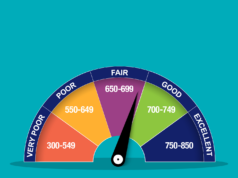
Key Takeaways:
- Refinancing student loans can lead to lower interest rates, saving you money in the long run.
- Consolidating multiple student loans into one simplifies repayment and provides better financial management.
- Refinancing can improve your credit score and provide financial freedom for other goals.
- Factors to consider when choosing a lender include interest rates, customer service, and additional benefits.
- Steps for successfully refinancing include gathering loan documents, preparing a strong application, and understanding the process and timeline.
- Managing refinanced student loans involves creating a budget, implementing repayment strategies, and building a strong financial foundation.
Student loans can often be a heavy burden to carry, with high interest rates and complex repayment options. However, refinancing student loans can be a game-changer, offering numerous benefits and paving the way for a debt-free future.
In this comprehensive guide, we will explore the advantages of refinancing, how to find the right lender, the steps to successfully refinance, and essential tips for managing your refinanced student loans.
1. The Benefits of Refinancing Student Loans

Refinancing student loans can bring a multitude of benefits that can positively impact your financial well-being. Let’s delve into some of the key advantages:
1.1 Lower Interest Rates for Significant Savings
One of the most appealing aspects of refinancing student loans is the potential to secure a lower interest rate. When you initially took out your loans, you may not have had the credit history or income to qualify for the best rates. However, as you progress in your career and build good credit, you become an attractive candidate for lenders.
By refinancing, you have the opportunity to replace your existing loans with a new loan that has a lower interest rate. This can result in substantial savings over the life of your loan, allowing you to pay off your debt faster and reduce the overall cost.
1.2 Simplified Repayment Options for Better Financial Management
Managing multiple student loan payments can be overwhelming and confusing. Refinancing offers the advantage of consolidating your loans into a single loan, simplifying the repayment process. This means that instead of making several payments to different lenders, you only have to make one monthly payment to your refinancing lender.
Not only does this make managing your finances easier, but it can also provide you with greater control over your budget. With a single payment, you can streamline your monthly expenses and allocate more funds towards other financial goals.
1.3 Improved Credit Score and Financial Freedom
Another significant benefit of refinancing student loans is the potential to improve your credit score. When you refinance your loans, the new lender pays off your existing loans in full. As a result, your credit report will reflect on-time payments and the closure of previous loan accounts.
Consistently making your payments on time and reducing your debt can have a positive impact on your credit score. A higher credit score not only makes you eligible for better interest rates but also opens up other financial opportunities, such as lower rates on credit cards, personal loans, or mortgages.
With improved credit and reduced debt, you gain a sense of financial freedom. You can focus on achieving your long-term goals, such as buying a home, starting a business, or saving for retirement, without the burden of hefty student loan payments.
2. Finding the Right Lender for Refinancing

When it comes to refinancing student loans, finding the right lender is crucial. Here are some factors to consider when choosing a lender:
2.1 Comparing Interest Rates and Loan Terms
Interest rates are a critical factor when refinancing your student loans. It’s essential to compare rates from various lenders to ensure you’re getting the best deal. Look for lenders that offer competitive rates and favorable loan terms, such as flexible repayment options and low or no origination fees.
Consider whether you want a fixed or variable interest rate. A fixed rate remains unchanged throughout the life of the loan, providing stability and predictability. On the other hand, a variable rate can fluctuate, potentially offering lower rates initially but increasing over time.
2.2 Evaluating Customer Service and Support
The level of customer service and support offered by a lender can significantly impact your refinancing experience. Look for lenders that have a reputation for excellent customer service, quick response times, and knowledgeable representatives who can address your questions and concerns.
Reading reviews from other borrowers or seeking recommendations from trusted sources can give you insights into the quality of service provided by different lenders.
2.3 Considering Additional Benefits and Incentives
Some refinancing lenders offer additional benefits and incentives to attract borrowers. These can include interest rate discounts for setting up automatic payments, loyalty programs that reduce rates over time, or hardship assistance programs if you encounter financial difficulties.
Consider these additional benefits when comparing lenders, as they can make a significant difference in the long run and improve your overall refinancing experience.
3. Steps to Successfully Refinance Student Loans

Refinancing student loans involves a series of steps to ensure a successful and smooth process. Let’s explore these steps in detail:
3.1 Gathering and Reviewing Loan Documents
Before you can start the refinancing process, gather all your loan documents and review them carefully. This includes your current loan statements, payment history, and any other relevant documentation.
Reviewing your loan documents allows you to understand the terms of your existing loans and compare them with potential refinancing options. It’s essential to have a clear understanding of the outstanding balances, interest rates, and repayment terms of your current loans.
3.2 Preparing a Strong Loan Application
Once you’ve gathered all necessary documents, you can begin preparing your loan application. A strong loan application increases your chances of being approved for refinancing at favorable terms.
When completing your application, focus on providing accurate and detailed information about your financial situation, employment history, and income. Be prepared to provide proof of income and any additional documentation that lenders may require.
It’s crucial to double-check your application for any errors or omissions before submitting it. Small mistakes can delay the approval process or even result in a denial.
3.3 Understanding the Refinancing Process and Timeline
Understanding the refinancing process and timeline is important to set realistic expectations. Once you submit your loan application, the lender will review your application and assess your creditworthiness.
If approved, the lender will provide you with a loan offer that outlines the new loan terms, including the interest rate and repayment options. Take the time to review the offer carefully and compare it with other potential lenders.
If you accept the offer, the lender will initiate the process to pay off your existing loans. Once the existing loans are paid off, you’ll start making payments on your new refinanced loan according to the agreed-upon terms.
It’s important to note that the refinancing process can take several weeks or even months, depending on various factors such as the lender’s workload, the complexity of your financial situation, and the time needed to review your application.
4. Essential Tips for Managing Refinanced Student Loans

Now that you have successfully refinanced your student loans, it’s important to manage them effectively to maximize the benefits. Here are some essential tips:
4.1 Creating a Budget and Setting Financial Goals
Creating a budget is crucial for managing your finances and ensuring you can comfortably make your monthly loan payments. Take the time to assess your income, expenses, and other financial commitments.
By tracking your expenses and setting priorities, you can allocate funds towards your student loan payments while still making progress towards other financial goals, such as saving for emergencies or investing for the future.
4.2 Implementing Strategies to Accelerate Loan Repayment
While refinancing your student loans may provide lower interest rates and more manageable repayment terms, it’s still advantageous to pay off your debt as soon as possible.
Consider implementing strategies such as making additional payments towards your principal balance, paying bi-weekly instead of monthly, or directing any windfalls or bonuses towards your loan payments. These strategies can help you save on interest and pay off your loans faster.
4.3 Building a Strong Financial Foundation for the Future
Managing your refinanced student loans is just one aspect of a strong financial foundation. Take a holistic approach to your finances and consider other factors that contribute to your financial well-being.
Build an emergency fund to ensure you have a safety net for unexpected expenses. Start saving for retirement early to take advantage of compound interest. Look for opportunities to increase your income or improve your job skills to enhance your earning potential. By focusing on these additional aspects, you can create a solid financial future and achieve long-term financial freedom.
In conclusion, refinancing student loans can be a powerful tool for achieving a debt-free future. By understanding the benefits of refinancing, finding the right lender, following the necessary steps, and implementing effective loan management strategies, you can master the art of refinancing and pave the way towards financial success.












